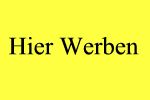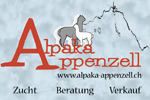Articles by Alpaca World Magazine:
Calculating Linebreeding / Inbreeding Coefficients
by Steve Marshall, Stansbury Alpacas
Introduction
A breeding plan of some description is a necessity for every alpaca breeder that is serious about herd improvement. Without a plan, breeders will produce alpacas that are most likely, of the average quality, of the national herd. There will be the few exceptions that are either outstanding or very poor. However, relying on a random combination of genes leads to assorted results. A carefully considered breeding plan is a wise investment by reducing the odds on what genetic material is passed on to the next generation. Through a sound understanding of genetic inheritance it is possible to stack the odds in your favour and reduce the mating game gamble. This article will build on the two published previously in Alpaca World Magazine, ?Keeping in Line? issue 19, and ?Linebreeding in Practice? issue 20 and should be referred to in that context.
How does linebreeding reduce the odds?
Linebreeding is a concentration of the genes of a specific ancestor or ancestors through their appearance multiple times in a pedigree. Its main aim or purpose is to develop consistency and uniformity within a herd or breed and stamp in particular traits and characteristics that are of high priority to your breeding programme. Linebreeding causes an increase in the proportion of like genes therefore increasing the chance of producing uniform, consistent alpacas that will display the dominant characteristics of the target ancestor.
Calculating inbreeding coefficient
When attempting to fix desired traits through linebreeding it is useful to have an understanding of Galton?s Law of ancestral heredity and Wright?s inbreeding coefficient to fully appreciate ancestral influence.
Galton?s ancestral law states that the two parents contribute between them on average half of the total genetic make up of the offspring, the four grand parents a quarter and great grand parents one eighth. Galton?s Law recognizes and estimates the hereditary influences that are not expressed in an individual but are capable of being passed on to the next generation. An individual alpaca will pass on a different combination of genes to each offspring and therefore, while very useful in estimating genetic influence, Galton?s Law is in fact an estimation of the proportional influence.
Table 1. Galton?s Law expressed mathematically.
1/4
SIRE
1/16
G. SIRE 1/64
G. G. SIRE 1/128
1/128
1/64
G. G. DAM 1/128
1/128
1/16
G. DAM 1/64
G. G. SIRE 1/128
1/128
1/64
G. G. DAM 1/128
1/128
1/4
DAM
1/16
G. SIRE 1/64
G. G. SIRE 1/128
1/128
1/64
G. G. DAM 1/128
1/128
1/16
G. DAM 1/64
G. G. SIRE 1/128
1/128
1/64
G. G. DAM 1/128
1/128
1/2 1/4 1/8 1/16
Galton?s Law expressed mathematically shows approximate proportional genetic contribution.
From Table 1, it becomes clear that the influence of an outstanding great grand sire will have little influence. However, if the great grand sire appears in four of the four possible great grand sire positions in the pedigree, his influence would be considerable.
Wright?s inbreeding coefficient is a measure of pedigree relationship and estimates the probability that both genes of a pair in an individual are identical (homozygous) by descent.
For example;
Sire and granddaughter or brother and half sister = 12.5%
It is relatively easy to calculate the inbreeding coefficient of one ancestor which appears twice in a pedigree. The cumulative effect of multiple appearances in a pedigree by an ancestor or multiple ancestors has a far greater genetic influence and is more difficult to calculate.
Wright?s formula for inbreeding coefficient devised in 1922 is expressed as;
FX = ∑ [(1/2) n + n' + 1 (1 + FA)]
FX = the inbreeding coefficient of animal X.
(1/2) = fraction of an individual alpacas genetic material that is passed on to its progeny.
n = the number of generations between animal B and the common ancestor.
n' = the number of generations between animal C and the common ancestor.
+1 = is added to n and n' to account for the additional generation between animal X and its parents.
FA = the inbreeding coefficient of the common ancestor.
The following example demonstrates the use of the formula in use;
FX = ∑ [(1/2) n + n' + 1 (1 + FA)] = ∑ [(1/2) 1 + 2 + 1 (1 + 0)] = 0.0625 = 6.25% inbreeding coefficient
FX = ∑ [(1/2) 1 + 1 + 1 (1 + 0)] + [(1/2) 1 + 1 + 1 (1 + 0)] = 0.25 = 25% inbreeding coefficient
However, when calculating the inbreeding coefficient in Figure 2, if ancestor D already has an inbreeding coefficient of 0.125 or 12.5% then the calculations would be as follows;
FX = ∑ [(1/2) 1 + 1 + 1 (1 + 0.125)] + [(1/2) 1 + 1 + 1 (1 + 0)] = 0.265 = 26.5% inbreeding coefficient
In a practical sense this means alpaca X has 26.5% likelihood of carrying genes for a particular trait by descent from the common ancestor.
In this situation the use of pedigree tracking software that automatically calculates inbreeding coefficients quickly becomes very useful. By using appropriate software a breeder may identify and track the influence of various ancestors over dozens of generations. Some pedigree tracking software allows the recording of various features or traits. This is particularly useful, providing the breeder with the facility to easily identify and trace the influence or source of a particular trait (good or bad) within their herd.
Selection, culling and EBVs
Good selection processes are vital in any breeding programme and have great influence in future generations. Decisions about selection and culling for a breeding programme should be, as far as possible, made based on analysis of data gained through objective measurement and in line with overall breeding goals. Selection should not be based solely on either pedigree or phenotype. When you have clearly described you breeding goals and objectives a value can be placed against particular measurable traits that are important to your own breeding objectives and score each trait to determine an Estimated Breeding Value (EBV) for each alpaca. In calculating EBV?s, it is important that they match your own breeding objective and include all traits that you identify to be important. In this way it is easier to measure improvement and make large genetic gains through appropriate selection. When linebreeding it is important to value the genotype, that is the pedigree, as well as the phenotype that can so easily be influenced by environment. Therefore you might assign a value for each time your target ancestor appears in the pedigree or a value according to the inbreeding coefficient. An EBV that takes into account the genotype of an alpaca will assist a breeder to reduce the impact of environmental influences on their selection process. Maintaining consistency with selection is difficult, but can be rewarded with uniformity and consistency among progeny.
Marketing and value of bloodlines
I believe that in the near future, quality, linebred alpacas will be more highly valued than an alpaca of similar quality with no common ancestor due to their increased likelihood of passing on visible traits. That is; ?What you see is what you get?. A serious breeder should value an alpaca whose phenotype and genotype closely match and therefore provides a higher level of reliability in passing on desired traits. The days of purchasing a particular alpaca with an unknown pedigree, based simply on its phenotype (physical appearance) are numbered. Breeders will become reluctant to invest heavily in what may be a Pandora?s Box with the genetic diversity to produce virtually anything. Linebreeding should not be looked at as the answer to producing the perfect alpaca. Equally, it would be shortsighted to dismiss it as being not viable or not useful. There is room in most breeding programmes to incorporate linebreeding to some degree and it should be used as a tool to complement other breeding systems. Linebreeding is a long term process requiring careful planning and selection, and patience for success.
Steve Marshall Stansbury Alpacas P. O. Box 195 Inglewood, South Australia, 5133 + 61 883 805 965 marshall@netyp.com.au
Tweet



